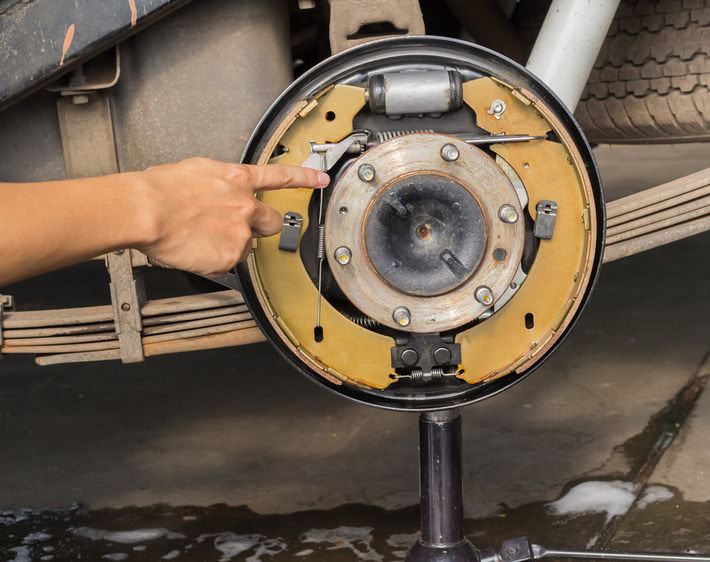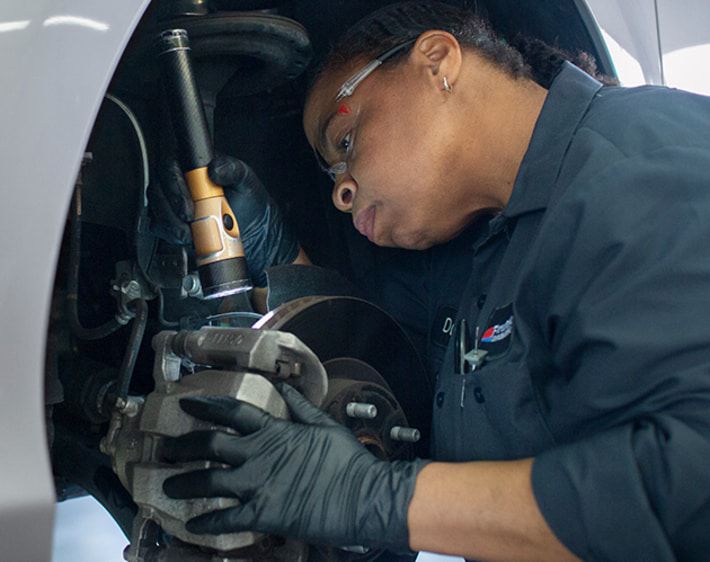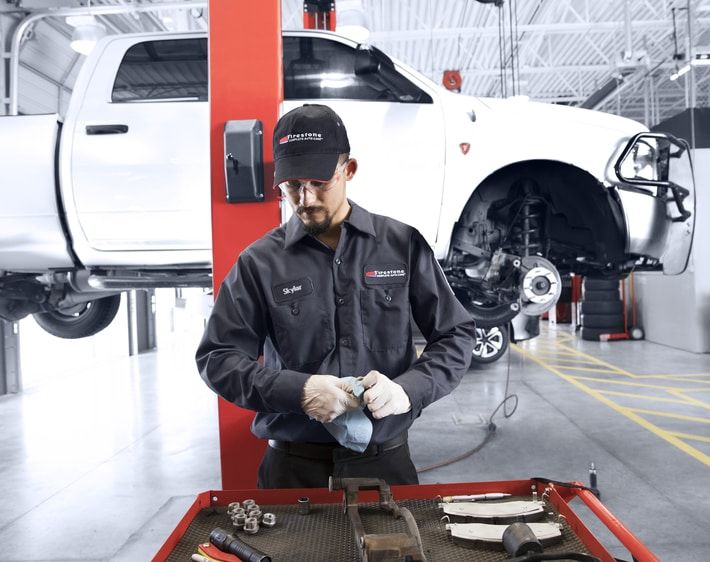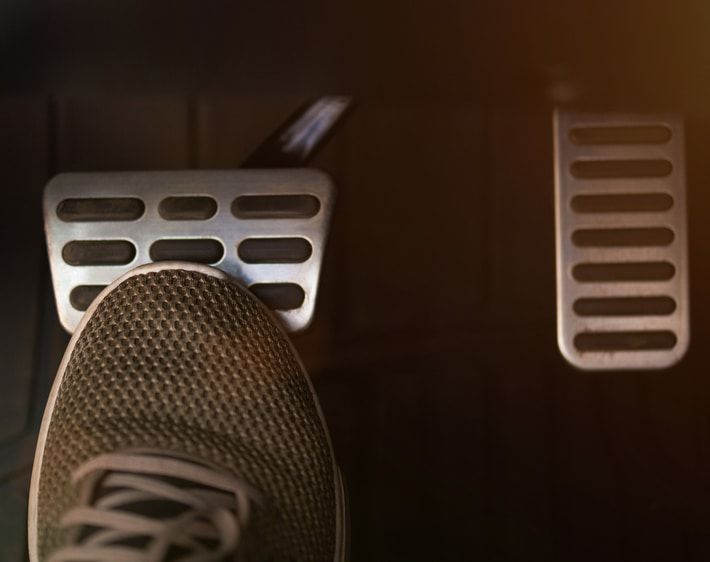Unlike your running sneakers, your car's brake shoes aren't meant to help improve your mile time. They're actually designed to help you stop your car! In fact, brake shoes are an essential element of certain braking systems, and, contrary to popular belief, they are not the same thing as brake pads. Learn what brake shoes are, why they're important, and how they stand apart from brake pads.
What Are Brake Shoes
While brake pads and brake shoes perform similar functions, they are not the same thing.
Brake pads are part of a disc brake system. In such systems, brake pads are squeezed together by a caliper against a rotor disc — hence the name "disc brake." The pads squeezing against the rotor generate the friction needed to stop the car.
Brake shoes are part of a drum brake system. Brake shoes are crescent-shaped components with a rough friction material on one side. They sit inside of a brake drum. When the brake pedal is pressed, the brake shoes are forced outward, pushing against the inside of the brake drum and slowing down the wheel.
Drum brakes and brake shoes are parts of an older type of braking system and have become less common on modern vehicles. However, some vehicle models will have drum brakes on the rear wheels since drum brakes are more affordable to manufacture.
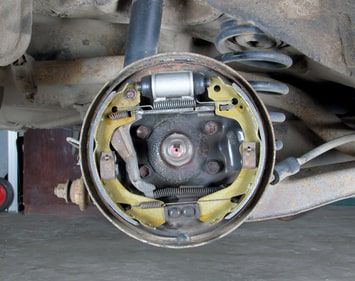
Brake Shoes vs. Brake Pads
When it comes to braking systems, most of today's vehicles have disc brakes with brake pads. As mentioned previously, some vehicles have disc brakes in the front and drum brakes in the rear to help reduce manufacturing costs. On these vehicles, the disc brakes are almost always kept on the front wheels since they can generally handle more stopping force when the brakes are applied. Here are a few more differences you'll find on brake shoe and brake pad systems.
Direction of Braking Force
The main difference between brake shoes and brake pads is their direction of force. Brake shoes stop the car by pushing outward, while brake pads stop it by moving closer together. Instead of sitting inside a brake drum, brake pads are positioned around a disc called a rotor. A caliper squeezes the brake pads together so they press against the rotor disc, which slows down the wheels and stops the car.
Amount of Stopping Power
Another difference between brake shoes and brake pads is the amount of force each one requires to stop the vehicle. Even though brake shoes typically have larger areas of rough-surfaced material to help create the friction needed to stop the car, they typically don't have as much stopping power as brake pads on a disc brake system. All things equal, disc brakes generally provide more stopping power much quicker than drum brakes, allowing the car to stop sooner and at shorter distances.
Life Expectancy
Brake shoes may outlast brake pads due to their location within the system. Since they are positioned in the rear of the vehicle, brake shoes may last longer as they aren't taking as much of the stopping force.
Additionally, brake shoes are housed inside the brake drum which can help protect them from rust, dirt, and corrosion. However, if dirt or debris does get into the brake drum, it can become trapped in the drum which may cause the brake shoes to wear down much faster. Brake pads, on the other hand, are more exposed to the elements, conditions of the road, and potential dirt and debris. This exposure, however, can also help the brake pads and rotors last longer, as the pads essentially clean the rotors by wiping dirt and debris off when the brakes are engaged.
Service
Since brake shoes are enclosed, they can better resist corrosion. However, drum brakes are a more complex system than disc brakes, making brake shoes more difficult and time consuming to replace than brake pads. While the vulnerability of brake pads leaves it potentially exposed to corrosion, it also makes them more accessible.
Both brake pads and brake shoes are not immune to wear. Typically, brake pads are easier and faster to access during a brake repair, while accessing brake shoes to perform brake repair services can take much longer. Brake shoes may also require additional adjustments as the brakes wear to ensure the brake shoes are still making proper contact with the drum.
When to Replace Brake Shoes
While brake shoes may not require service as frequently as brake pads, they won't last forever. Just like brake pads, brake shoes must be changed routinely in order to avoid issues with your braking system or, worse, brake failure. Some brake shoes are designed to last several thousand miles, but driving habits, road conditions, and weather can all affect the lifespan of your brake components — regardless of whether you have disc brakes, drum brakes, or both!
Fortunately, checking the condition of your braking system is easy! Head into a Firestone Complete Auto Care near you for a free brake inspection. We'll perform a visual inspection of the braking system including both front and rear braking components, brake fluid, master cylinder condition, brake lines and the emergency brake. We will also perform a test drive to check the operation of your brake system. Once we’re done with the inspection, we’ll let you know which services or repairs are recommended or required to help keep your brakes operating (and stopping) smoothly!
